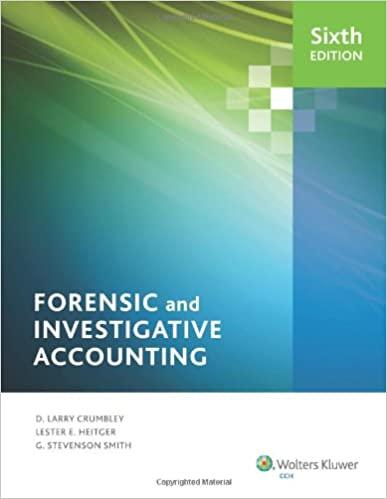Question
On January 1, Year 7, the Big Company purchased 64,000 of the 80,000 ordinary shares of the Little Company for $90 per share. On that
On January 1, Year 7, the Big Company purchased 64,000 of the 80,000 ordinary shares of the Little Company for $90 per share. On that date, Little had ordinary shares of $3,200,000, and retained earnings of $1,800,000. When acquired, Little had inventories with fair values $50,000 less than carrying amount and a parcel of land with a fair value $200,000 greater than the carrying amount. All other identifiable assets and liabilities of Little had fair values equal to their carrying amounts. Littles accumulated depreciation on the plant and equipment was $400,000 at the date of acquisition.
The year 11 financial statements for Big and Little were as follows:

Additional Information
- At the acquisition date, the equipment had an expected remaining useful life of 5 years. Both companies use the straight-line method for all depreciation and amortization calculations and the FIFO inventory cost flow assumption. Assume a 25% income tax rate on all applicable items. Impairment of goodwill in Year 8 amounted to $20,000. Method for adjusting depreciation at acquisition is the net method.
- On August 1, Year 11, Little sold a parcel of land to Big and recorded a total non-operating gain of $300,000.
- Sales of finished goods from Big to Little totalled $1,070,000 in Year 10 and $2,070,000 in Year 11. These sales were priced to provide a gross profit margin on selling price of 30% to the Big Company. Littles December 31, Year 10, inventory contained $321,000 of these sales; December 31, Year 11, inventory contained $621,000 of these sales.
- Sales of finished goods from Little to Big were $870,000 in Year 10 and $1,270,000 in Year 11. These sales were priced to provide a gross profit margin on selling price of 35% to the Little Company. Bigs December 31, Year 10, inventory contained $170,000 of these sales; the December 31, Year 11, inventory contained $570,000 of these sales.
- The amount still owing by Little on inventory purchases is $120,000.
- Bigs investment in Littles account is carried in accordance with the cost method and includes advances to Little of $280,000, which are also included in current liabilities.
- There are no intercompany amounts other than those noted, except for the dividends of $300,000 (total amount) declared and paid by Little.
Required:
Calculation of Ending Retained Earnings End Y11. (Negative amounts should be indicated with a minus sign.)

Step by Step Solution
There are 3 Steps involved in it
Step: 1

Get Instant Access to Expert-Tailored Solutions
See step-by-step solutions with expert insights and AI powered tools for academic success
Step: 2

Step: 3

Ace Your Homework with AI
Get the answers you need in no time with our AI-driven, step-by-step assistance
Get Started


